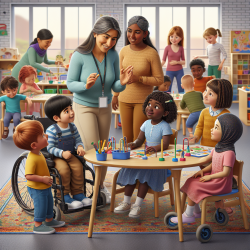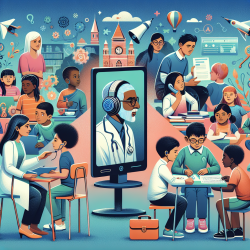Introduction: The Power of Knowledge in Therapy
In the realm of speech-language pathology, every piece of research holds the potential to transform the lives of children. The study titled CLN8 Mutations Presenting with a Phenotypic Continuum of Neuronal Ceroid Lipofuscinosis—Literature Review and Case Report sheds light on a complex genetic condition that can significantly impact therapeutic approaches. Understanding the nuances of CLN8 mutations and their phenotypic spectrum is crucial for practitioners aiming to deliver personalized and effective therapy.
Understanding CLN8 Mutations
CLN8 is a gene associated with neuronal ceroid lipofuscinosis (NCL), a group of hereditary lysosomal storage disorders. These disorders are characterized by progressive neurodegenerative symptoms, including cognitive and motor deterioration, seizures, and vision loss. The research highlights a novel mutation in the CLN8 gene, which contributes to a continuous spectrum of phenotypes rather than distinct categories. This discovery emphasizes the importance of recognizing the variability in symptoms and progression among affected individuals.
Implications for Speech-Language Pathologists
For speech-language pathologists, understanding the genetic underpinnings of conditions like NCL is essential for tailoring interventions. Here are some key takeaways from the research:
- Personalized Therapy: Recognizing the phenotypic continuum allows therapists to customize interventions based on individual needs, focusing on specific areas of deficit such as speech production, comprehension, and social communication.
- Early Intervention: Identifying early signs of developmental delay and cognitive regression can prompt timely interventions, potentially slowing disease progression and enhancing quality of life.
- Collaborative Care: Working closely with geneticists and neurologists can provide a comprehensive understanding of the child's condition, facilitating a holistic approach to therapy.
Encouraging Further Research
The study underscores the need for continued research into the genetic and phenotypic aspects of NCL. Speech-language pathologists are encouraged to engage in interdisciplinary research efforts to further explore the implications of genetic findings on therapeutic practices. By contributing to research, practitioners can help refine diagnostic criteria and intervention strategies, ultimately improving outcomes for children with NCL.
Conclusion: A Call to Action
As practitioners dedicated to creating positive outcomes for children, embracing the insights from genetic research like the CLN8 study is imperative. By integrating these findings into practice, speech-language pathologists can enhance their ability to provide targeted, effective therapy. To delve deeper into the research and its implications, I encourage you to read the original paper: CLN8 Mutations Presenting with a Phenotypic Continuum of Neuronal Ceroid Lipofuscinosis—Literature Review and Case Report.










